People in the West often have one of two impressions of Chinese food: golden crispy, sweet and sour, spring-rolled goodness or suspiciously eyed, almost-inedible, alien food that might be encapsulated by the word “unappetizing.” Before I moved to China, I had been treated to plenty of stories about how bizarre the food would be and that I would be craving anything familiar after a few days of being there.
It’s safe to say that neither of these are the whole story, though there are elements of both. Shortly after arriving, I had eaten cow intestines and stomach, split pea cake, and frog. I also discovered tourist locations with novelty food that even the locals would turn their nose up at, such as scorpions and spiders.
My point? China has plenty of delicious foods for even the most hesitant among us!
Kung Pao Chicken (Gōng bǎo jī dīng)

It’s a shame that I’ve never tried the North American variant of this dish but the authentic rendition often involves a reddish, viscous, sweet sauce. Scattered throughout the sauce are savory cubes of chicken, peanuts, leeks, and various spices. Some recipes include the Sichuan pepper, capable of mildly numbing your mouth. Yum!
Sweet and Sour Pork
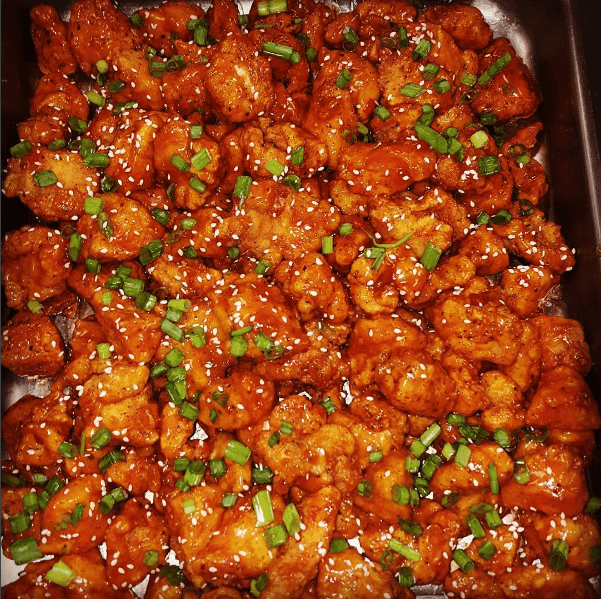
Very similar to what they serve back home, you have two options – with pineapple and without. The chunks of pork come deep fried and crunchy, enveloped with a thick, saucy coating. China seems to like cartilage and fatty cuts of meat, so you can expect that those will also be included in the mix. Alongside the meat will come the aforementioned pineapple (or not), green and red peppers, as well as flavourful onions.
Dumplings (Jiăozi)

The Chinese have a phrase: There is nothing more comfortable than lying down. There is nothing more delicious than dumplings. The statement shows how much of a cultural icon dumplings have come to be in China. Dumpling wrappers – like wontons, but round and thicker – are stuffed with all sorts fillings (pork being the most common, and are either steamed or boiled. They are typically served with brown rice vinegar, minced garlic, and/or chili sauce.
Another fun fact: Locals will sometimes refer to a crowded pool as being “like dumplings in a pot.”
Peking Duck
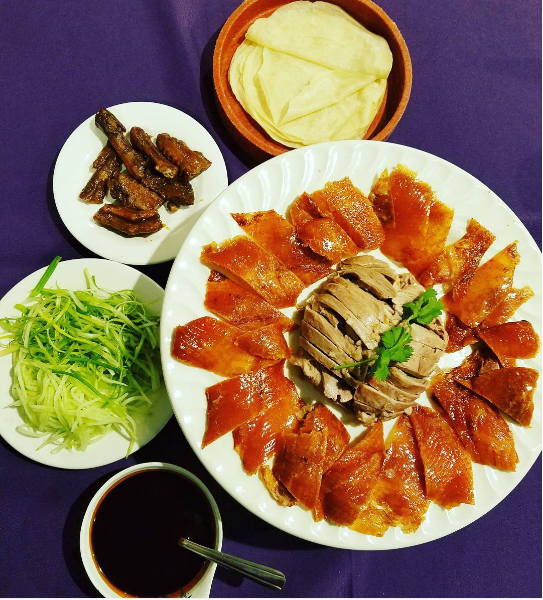
Being in Beijing, this was one of the first dishes I was treated to. A typical Peking Duck dish includes thin slices of duck meat with a crispy layer of skin, sweet soybean sauce to dip it in, some finely cut greens (cucumber and leeks are most common) and a dish of duck wrappers (round and thinner than wontons) for your rolling pleasure. Another option is to dip the meat in a small dish of sugar for a sweet and savoury finish.
Tomato Egg Noodle (xīhóngshì jīdàn miàn)
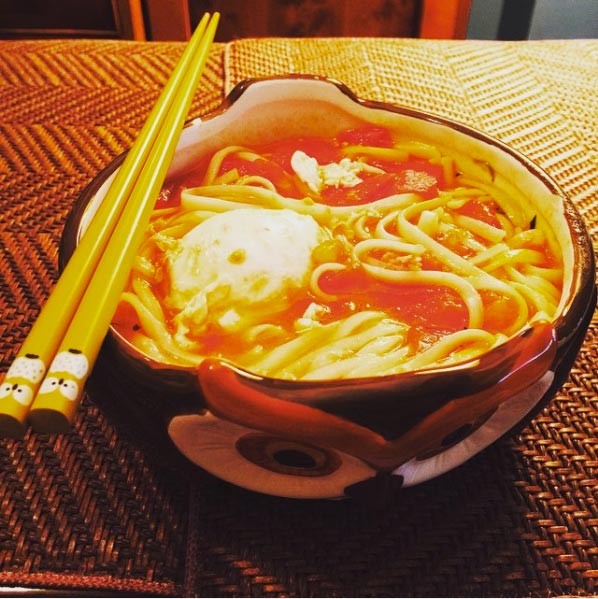
This is the literal translation of the name, and is a very common, cheap dish. It’s salty, with a satisfying flavor and is among my favorite dishes on this list. It’s like a thin tomato soup with ribbons of noodle and chunks of scrambled egg. I’m not a huge fan of eggs, and yet this dish really does it for me. You can find it almost anywhere.
Hotpot (Huǒguō)
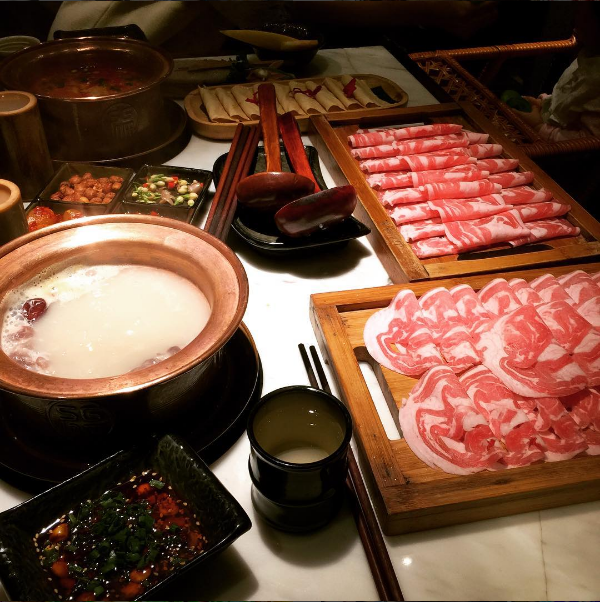
It seems that people in Asian countries are big fans of cooking for themselves in restaurants, with hotpot as a prime examples of this. You’ll be brought a broth of your choosing and have it placed on a hotplate. You order from a list of various foods and ingredients, toss them in the pot, and enjoy once boiled to perfection. Meat, vegetables, and everything in between (I’m looking at you tofu and fish cakes) are all welcome to intermingle, then be dipped in one of several sauces that are provided. In the past they used to only have sesame sauce, but to attract more customers, a variety of options are now being offered.
Skewers (Chuàn / Chuàr)
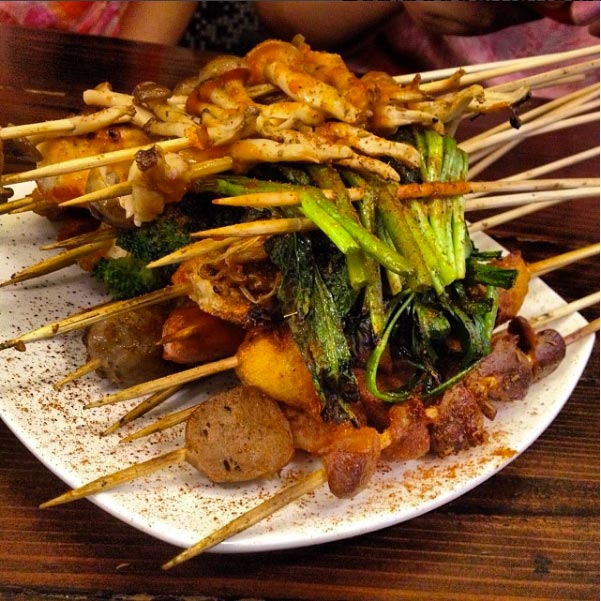
It almost feels like a betrayal to refer to them as skewers. They are exclusively referred to as chuar in Beijing, and I had to actually look it up to know the proper English term. These treats are heavily spiced skewers of lamb, beef, pork, chicken. They come as spicy as you want, and can be found anywhere from restaurants to street vendors. I once went to a restaurant that had an impressive machine that would rotate the skewers over coals on the table. Definitely a cultural icon that I wish we had back home.
Biáng Biáng Miàn [bee-ahng bee-ahng me-ann]
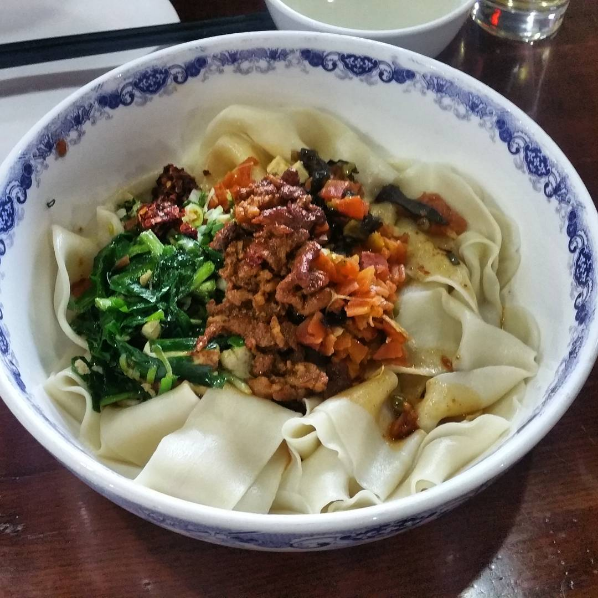
These are wide, long ribbons of noodles that are to die for if you’re a noodle fan. They are said to be one of the “ten strange wonders of Shaanxi province.” The noodles are often topped with chili peppers to keep warm in the bitter Shaanxi winters. The characters involved in writing this dish are said to be the most difficult in the Chinese language, requiring 43 strokes in simplified form. It’s so complicated that my Chinese friends could only send me pictures of the character – not the character itself.
Stinky Tofu (Chòu dòufu)

Pungent and black. There aren’t many things with that description that are worth trying, but Chòu dòufu is one of them. The opinions are so divided that some cities have outlawed serving it on the street due to the smell. If you find the odor to be too off putting, you can simply try the yellow variant, or the classic non-smelly version: fried tofu. Both come with some finely chopped green onions and chili sauce and they’re usually sold at the same stands on the street. I don’t think I’ve ever come across this in a restaurant, though I’ve heard it’s available around Shanghai.
Baked Fish (Kǎo yú)

This is the best name I could find for it, though it hardly does the dish any justice. In a restaurant that serves this, they will let you choose the toppings that will come piled on top of the fish in a large, rectangular pan that is suspended over an open flame. Factors that might put off westerners: the skin is descaled but intact, the head and tail are still attached and it’s not cut. Yes, you have to pick at this dish with chop sticks, but it’s totally worth it. This is China’s love of fish in all of its glory.
Popsicles – Milk and Sweet Ice
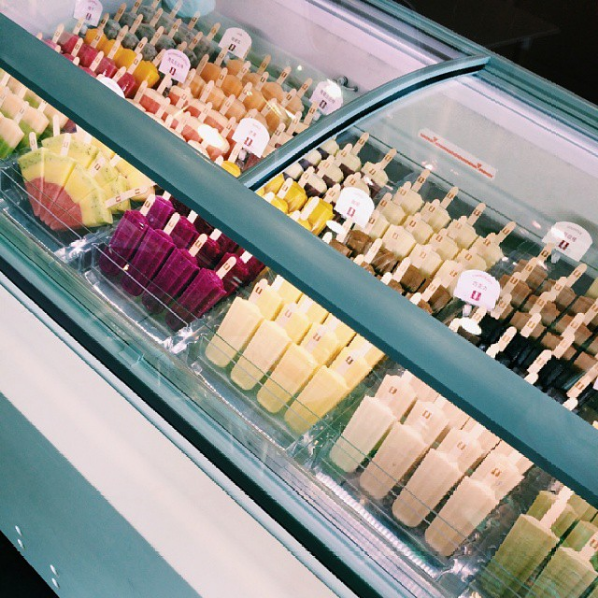
While not a dish per se, it is one of my favorite discoveries that helped me get through the Chinese summer. They have vanilla milk popsicles (shuāng bàng) which far surpass any ice lolly I’ve ever had in North America. Another cool treat is sweet ice popsicles, which far exceeds the nondescript name. Those are just my favorites, though there are a vast assortment of frozen treats on sticks that can be found at many popular tourist locations. Word to the wise: avoid durian.
Rice Liquor (Bái jǐu)

Literally translated as “white alcohol,” this is an iconic drink in China. The classic Chinese brand is called Erguotou (are-goo-oh-toe), which tips the scales at 56% alcohol. The quality of rice liquor can either make it insufferable or sweet and smooth. It’s sometimes the butt of jokes or a celebratory drink but either way the cultural role makes it worth an attempt.


